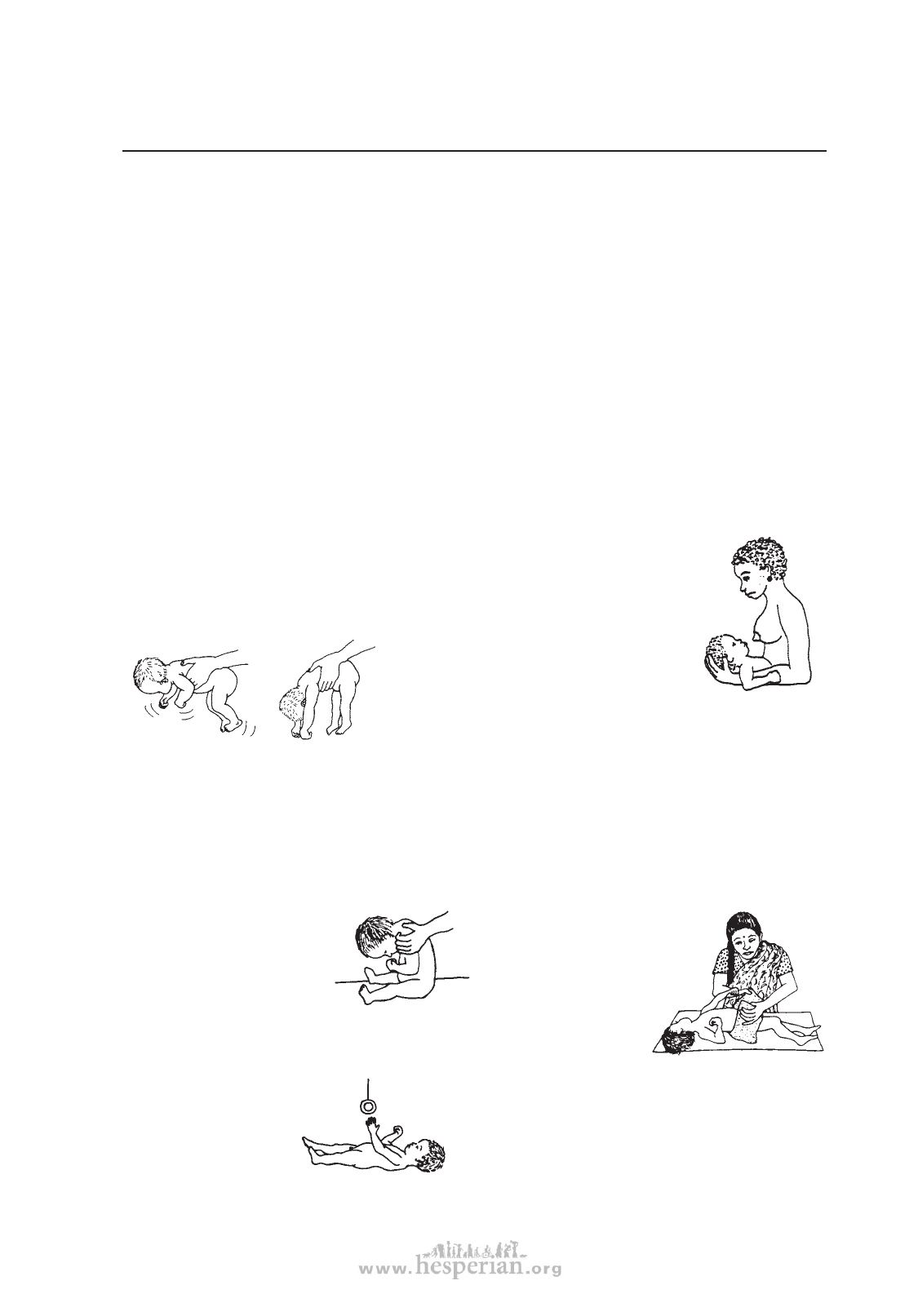
Cerebral Palsy
87
CHAPTER
9
WHAT IS CEREBRAL PALSY?
Cerebral palsy means ‘brain paralysis’. It is a disability that affects movement and body
position. It comes from brain damage that happened before the baby was born, at birth,
or as a baby. The whole brain is not damaged, only parts of it, mainly parts that control
movements. Once damaged, the parts of the brain do not recover, nor do they get worse.
However, the movements, body positions, and related problems can be improved or made
worse depending on how we treat the child and how damaged his or her brain happens to
be. The earlier we start, the more improvement can be made.
In many countries cerebral palsy is the most frequent cause of physical disability. About
1 of every 300 babies is born with or develops cerebral palsy.
How to recognize cerebral palsy
EARLY SIGNS
• At birth a baby with cerebral palsy is
often limp and floppy, or may even
seem normal.
NORMAL
FLOPPY
Child hangs
in upside
down ‘U’ with
little or no
movement.
• Baby may or may not breathe right away
at birth, and may turn blue and floppy.
Delayed breathing is a common cause of
brain damage.
• Slow development
Compared to other
children in the village,
the child is slow to
hold up his head, to
sit, or to move around.
• He may not use
his hands. Or he
only uses one
hand and does
not begin to use
both.
• Feeding problems
The baby may have
difficulties with sucking,
swallowing and chewing.
She may choke or gag
often. Even as the child
gets bigger, these and
other feeding problems
may continue.
• Difficulties in taking care of the
baby or young child. Her body may
stiffen when she is carried, dressed,
or washed, or during play. Later she
may not learn to feed or dress herself,
to wash, use the toilet, or to play with
others. This may be due to sudden
stiffening of the body, or to being so
floppy she ‘falls all over the place’.
The baby may be so
limp that her head
seems as if it will
fall off. Or she may
suddenly stiffen like
a board, so that no
one feels able to
carry or hug her.
Body stiffens like a board.
• The baby may cry a lot and seem very
fussy or ‘irritable’. Or she may be very
quiet (passive) and almost never cry or
smile.